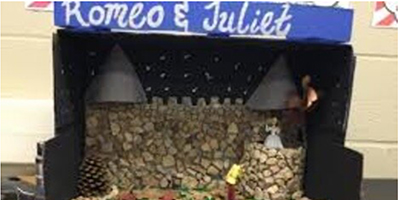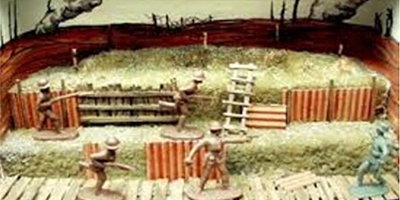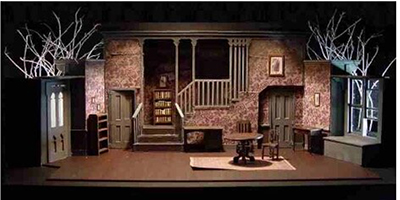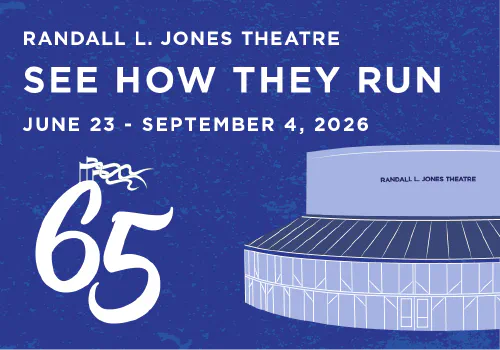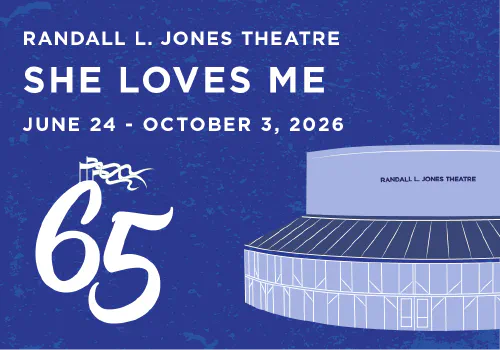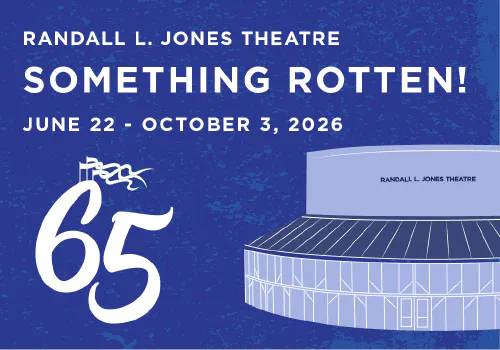OBJECTIVE
Students will learn how scenic models are used to display their ideas for their theatre set. They will also learn to identify various aspects of a theatre space.
UTAH CORE STANDARDS
Theatre
Standard L3.T.CR.2: Create and implement a major design element for a main stage production.
Standard L2.T.CR.4: Cooperate as a creative team to make interpretive choices for a drama/theatre work.
Standard L3.T.R.7: Analyze and evaluate why artistic choices are made in a drama/ theatre work.
INTENDED AUDIENCE
9th-12th grades
TIME
60 minutes
MATERIALS
-
Scenic Model Handout. Students will need:
-
- A Shoebox or foam board
- Material to build their model
- A ruler
- Glue
- Paint
-
-
Access to a theatre to tour or a projector for the videos
OUTLINE
Students will create their own scenic models using the renderings they made in lesson 2. They will also get a chance to learn the aspects and features of their own auditorium or another theatre.
-
VIDEO (8 minutes)Set Tour of Beetlejuice the musical on Broadway
-
**WARMUP GAME - ENEMY AND PROTECTOR (7 minutes)**Procedure:
1. Standing in a room (ideally on stage) everyone is told to mentally pick someone in the room that will be their enemy.
2. Then everyone must pick someone who will be their protector.
3. The individuals themselves only know these choices.
4. Once everyone has made their choices, the leader yells, “go!” and everyone must try to keep their protector between themselves and their enemy at all times.
5. Ideally the group will eventually come to a stop as everyone is able to have their protector between them and their enemy. The smallest movement from one person will send a chain-reaction through the entire group as they try to reposition. A total stop is not always achieved, and that’s okay!
This game will help students understand the use of space. Yes lining up shoulder to shoulder would keep your protector between you and your enemy, but they have their own problems to worry about. Maybe standing 20 feet away is the best way to get the desired result?
-
**LESSON/HOMEWORK PREP (15 minutes)**The next step in the role of the scenic designer is to create a model of your set. This is a miniature version of your set (it looks like a doll house). It has all the details that will be on the finished product. This is what will be shown to the actors so they know what they will be acting on weeks or months before it is actually built. It is often built out of foam board or cardboard (something that has enough structure to stand on its own).
- Your model should be built inside of a shoe box. Simply take the lid off and turn it on its side. Now you have your stage. Most shoe boxes are not big enough to build a 1/4 in model in them. You will have to half your measurements to fit them in the new space. That happens though! When Hamilton moved from Off-Broadway to Broadway they had to expand their design because the Broadway stage was much bigger.
Alternatively, you may choose to build your set from foam board. You will need to cut out a stage floor and build the set up from there. - Your sets must be 3-dimensional and free-standing
- Must be in full color and textured the way it would be full size (curtains should be made from fabric, wallpaper should have the same design as the real size, if the floor is going to be sand (or equivalent) there should be sand on the model).
- This will be homework (the project can’t fit in a 1-hour session)
- Your model should be built inside of a shoe box. Simply take the lid off and turn it on its side. Now you have your stage. Most shoe boxes are not big enough to build a 1/4 in model in them. You will have to half your measurements to fit them in the new space. That happens though! When Hamilton moved from Off-Broadway to Broadway they had to expand their design because the Broadway stage was much bigger.
Examples of set models
